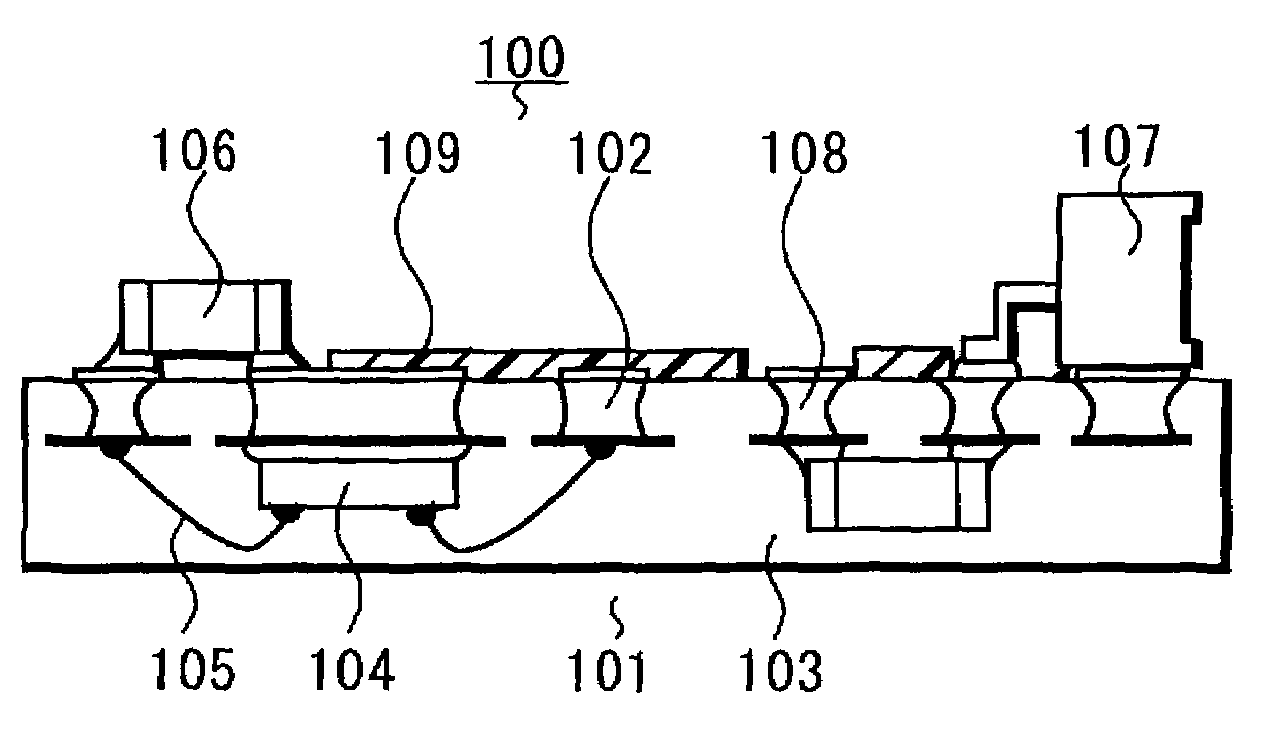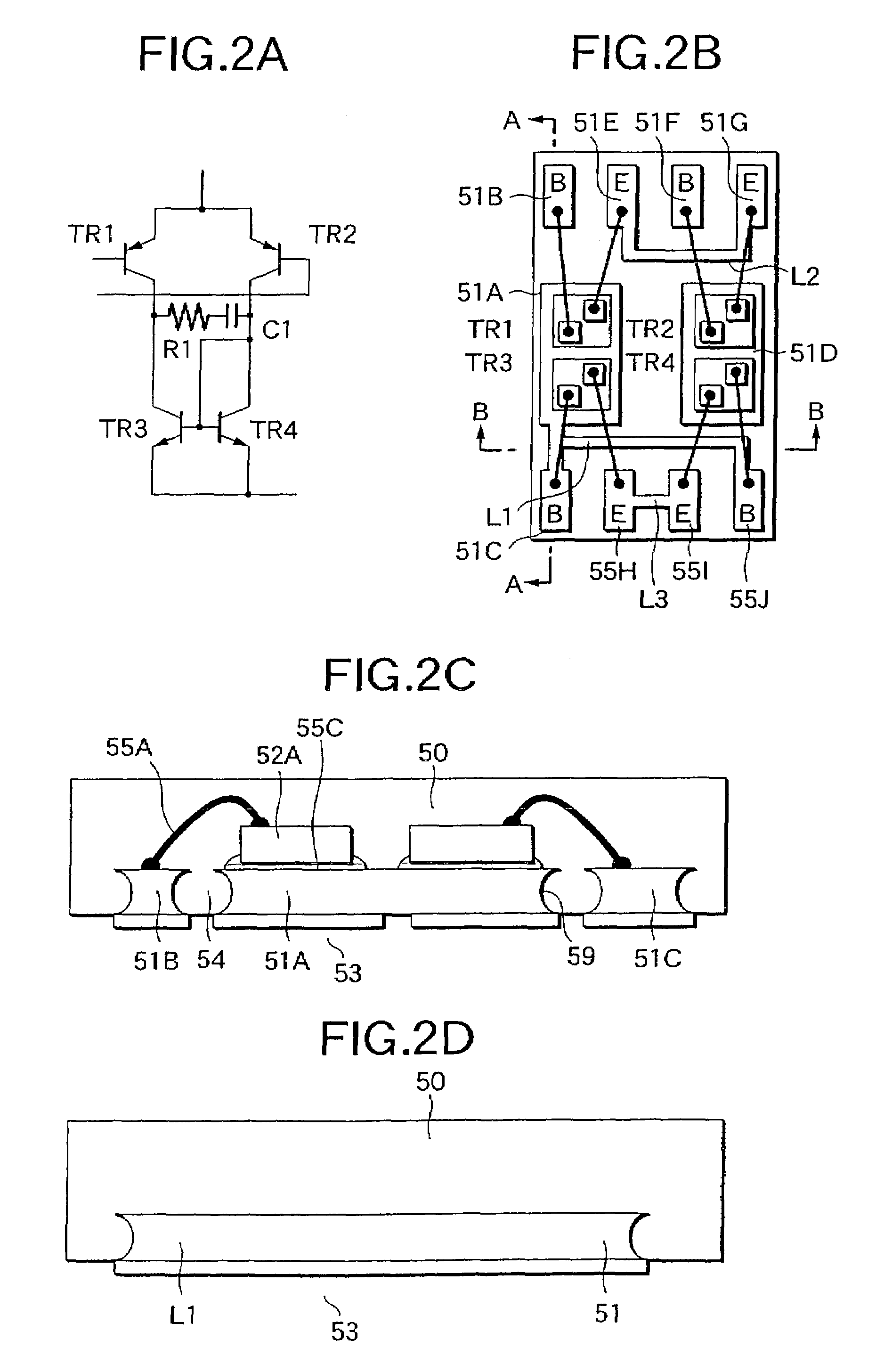Circuit device and manufacturing method of circuit device and semiconductor module
- Summary
- Abstract
- Description
- Claims
- Application Information
AI Technical Summary
Benefits of technology
Problems solved by technology
Method used
Image
Examples
first embodiment
for a Manufacturing Method of a Circuit Device
[0138]Referring to FIGS. 3 to 7 and FIG. 1, a manufacturing method of a circuit device 53 will be described below.
[0139]Firstly, a sheet conductive foil 60 is prepared. This conductive foil 60 is composed of a material which is selected in consideration of the adhesive property to the brazing material, bonding property and plating property. Specifically, the material may be Cu or Al as the main constituent, or an alloy of Fe—Ni. Further lamination plate of Cu and Al is applicable.
[0140]The conductive foil is preferably about 10 μm to 300 μm thick in view of the etching that is performed later. Herein, a copper foil having a thickness of 70 μm (2 ounces) is used. However, the thickness may be fundamentally over 300 μm or less than 10 μm. It is sufficient that the trench 61 which has a smaller depth than the thickness of the conductive foil 60 may be formed, as will be described later.
[0141]The sheet laminated conductive foil 60 is rolled ...
second embodiment
for a Manufacturing Method of a Circuit Device
[0170]Referring to FIGS. 9 to 13 and FIG. 8, a manufacturing method of a circuit device 56 having a visor 58 will be described below. The second embodiment is substantially the same as the first embodiment (FIGS. 1 and 2), except that a second material 70 which serves as the visor is applied. The details are not described here.
[0171]Firstly, a laminated conductive foil 60 is prepared in which the second material 70 having a small etching rate is applied on the conductive foil 60 made of the first material, as shown in FIG. 9.
[0172]For example, if Ni is applied on the Cu foil, Cu and Ni can be etched by ferric chloride or cupric chloride at a time, advantageously resulting in the formation of the visor 58 of Ni, due to a difference between etching rates. The bold line indicates the conductive coat 70 made of Ni, its film thickness being preferably about 1 to 10 μm. The larger film thickness of Ni can form the visor 58 more easily.
[0173]Th...
third embodiment
for a Manufacturing Method of a Circuit Device
[0178]Referring to FIGS. 14 to 20, a method for manufacturing a circuit device will be described below, in which the IC circuits having the conductive paths composed of a plurality of kinds of circuit elements, wires, die pads and bonding pads are arranged like a matrix and divided into individual IC circuits after sealing. Referring to FIG. 2 and particularly a cross-sectional view of FIG. 2C, the structure will be described below. This manufacturing method is substantially the same as in the first embodiment and the second embodiment, and is simply described.
[0179]Firstly, a sheet conductive foil 60 is prepared, as shown in FIG. 14.
[0180]The sheet conductive foil 60 is rolled in a predetermined width, and maybe carried to the later process. Or the conductive foils cut in a predetermined size may be prepared and carried to the later process.
[0181]Subsequently, there is a step of removing the conductive foil 60 except for at least the re...
PUM
 Login to View More
Login to View More Abstract
Description
Claims
Application Information
 Login to View More
Login to View More - R&D
- Intellectual Property
- Life Sciences
- Materials
- Tech Scout
- Unparalleled Data Quality
- Higher Quality Content
- 60% Fewer Hallucinations
Browse by: Latest US Patents, China's latest patents, Technical Efficacy Thesaurus, Application Domain, Technology Topic, Popular Technical Reports.
© 2025 PatSnap. All rights reserved.Legal|Privacy policy|Modern Slavery Act Transparency Statement|Sitemap|About US| Contact US: help@patsnap.com



